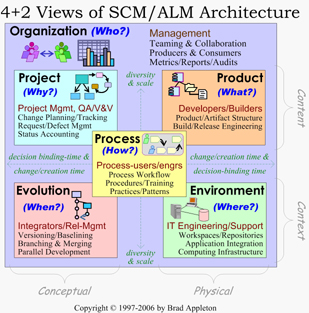Anyway, here is what I found. If you know of others, please drop me a line.
Blogs about Software CM or Version Control:
- My blog (of course) on Agile CM Environments
- Frank Schophuizen’s blog
- Robert Cowham’s weblog
- Damon Poole's blog (Damon is CTO and Founder of AccuRev)
- Vincent “BuildMaster” Maraia’s weblog
- Mike Mason’s blog deals with Subversion and CM/build issues
- Microsoft’s Team Foundation weblogs and Rob Caron’s blog
- Alex Bakman (of Ecora Software) has an IT Change and Configuration Management blog
- The CM II Community website seems to have a few RSS feeds
- Mike Clark’s Pragmatic Automation blog regularly covers CM-related issues of automating software build/release/deployment
- Charles Betz' ERP4IT blog is chock full of great stuff that is directly relevant to CM even when it doesn't directly discuss CM! It also has some great blog entries on Model-Driven CM, CMDB's and much more.
- Slava Imishev's blog
- Eric Sink’s weblog
- Paul Duvall's weblog
- Steve Donie's blog
- Steven Wilssens' blog
- Craig Borysowich's blog has had a recent spate of entries devoted to CM fundamentals
Do you know of any that I might have missed?
Happy New Year everybody!


